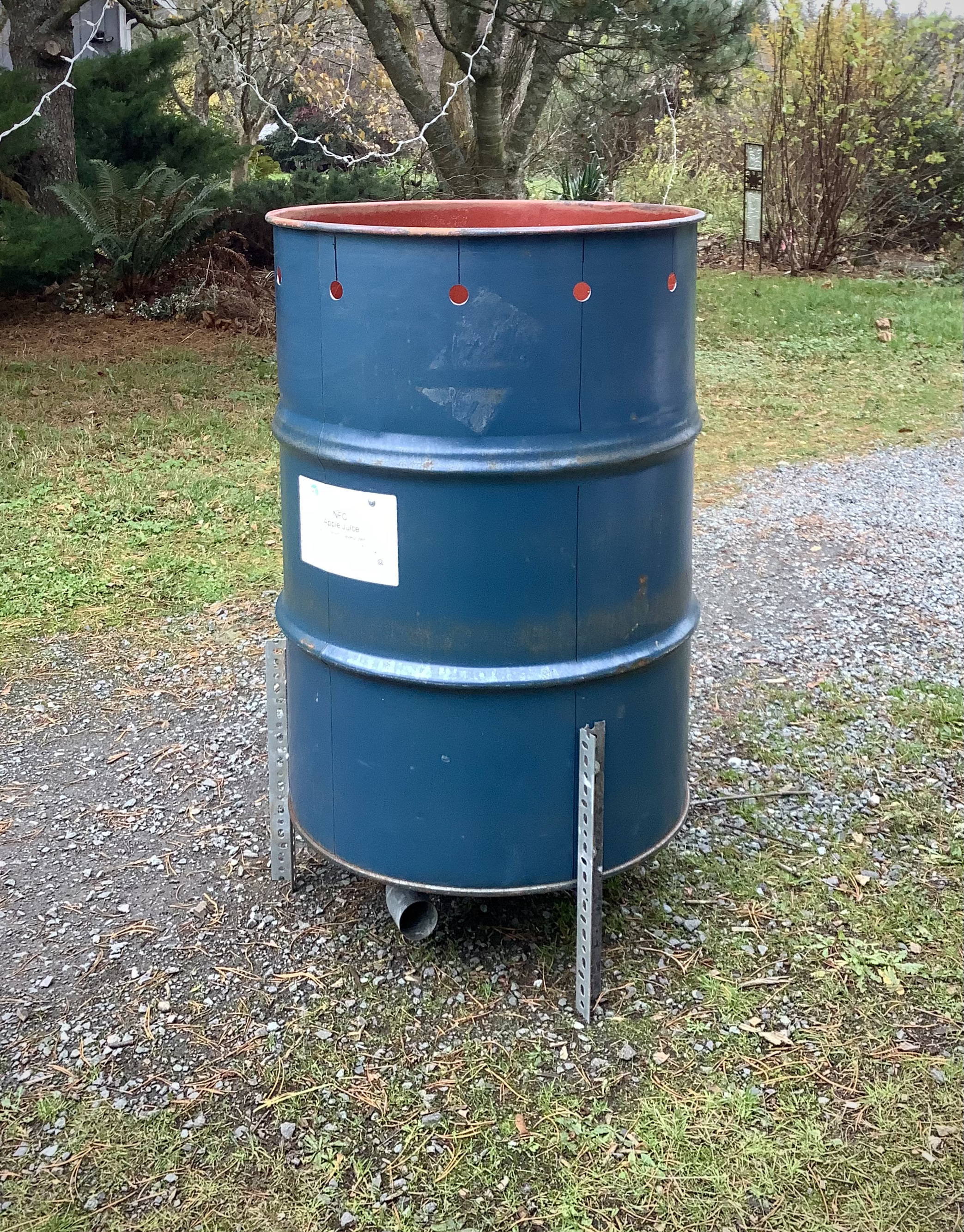Natural draft TLUDS are among the cleanest burning biochar stoves around. But can they be made even cleaner?
Top Lit Updraft Stoves – TLUDs – are among the cleanest, most efficient stoves for making biochar at home. In tests they consistently rank very low among particulate and CO emissions. As biochar is often touted as a way to address the problem of climate change by “sequestering” carbon in the soil, it it is only natural to want to keep improving home made biochar stoves to reduce their emissions so that in making the biochar we are not contributing to the problem we are trying to solve.
Pyrolysis: The basic means of making charcoal, pyrolysis, is simply heating carbonaceous material in the absence of oxygen to drive off volatile gasses and moisture. In a TLUD this is accomplished by constructing a container with strategically placed holes that allow in air in such a way to promote combustion of wood gasses at the top of the stove while restricting the oxygen to the wood at the bottom.
In small stoves, providing ample air to combust wood gasses is relatively simple to accomplish as the air holes are usually not far from the center of the combustion chamber. In larger, 55 gallon drum sized TLUDs, however, complete combustion can be more problematic. Because of their larger diameter, it is more difficult for oxygen to mix with the wood gas in the center of the stove. The result is that emissions from 55 gallon TLUDs can be higher than with smaller stoves.
The 3 AM concept: What if air is provided to the center of the combustion chamber by means of a central vertical pipe? Would this not address the problem of air distribution in larger stoves? A sharpie sketch on a piece of scrap paper:

Great Minds Think Alike: In my Google searches of biochar stoves I came across a design by Paul Olivier that mirrored the one I had just drawn.
: 
The Build: As I have been constructing TLUDs for a while now, the construction of the new model was fairly simple and straight forward. As usual, it was made with standard, off the shelf components from my local hardware store and salvage yard. I still don’t know how to weld (sigh) so all connections are mechanical with bolts and sheet metal screws. My intent is to show if I can get oxygen to the center of the burn chamber and thereby improve combustion efficiency and reduce emissions.




I added a small nozzle to the top of the center pipe to attempt to direct the air flow in a circular “vortex” pattern to promote mixing of air with wood gas.
At the bottom of the pipe I added a pair of elbows to facilitate the addition of a fan if passive airflow doesn’t provide enough air.
Does It Work? My first test burn was quite interesting. Using only passive draw of oxygen through the pipe the performance was not significantly better. The stove burned well but still produced some smoke. I speculate that the cap I put on the pipe inhibited the flow of oxygen to the center of the ba rrel.
rrel.
 Added Air: Prior to the first burn I had rigged up a connector pipe that would accept a 4” blower fan. I hooked this fan up to a portable solar panel and turned it on. Immediately, the smoke was lessened!
Added Air: Prior to the first burn I had rigged up a connector pipe that would accept a 4” blower fan. I hooked this fan up to a portable solar panel and turned it on. Immediately, the smoke was lessened! 
Even with this arrangement the stove did reach a point where the air flow was somewhat unbalanced with too much “primary air” entering at the bottom of the stove. Larger primary air holes are advantageous when first lighting a TLUD. But they are counter productive during the middle portion of the burn as Secondary air is much more important to ensure that wood gasses are combusted without burning the wood.
The Answer: In Paul Olivier’s design he called for a skirt around the bottom of the stove that can be tightened to reduce primary air flow. I found some scrap pieces of an old barrel and fashioned some flanges that accomplished the same thing.
Success! The second burn with the flanges worked very well. I left the flanges off at the beginning and cranked the fan up high for maximum air flow. The stove got up to temperature in half the time it usually takes. Then I dialed back the fan to a low setting and put on the flanges on the bottom. Thereafter the stove had a controlled amount of heat that produced some excellent char.
Conclusion:
I am quite pleased with the results I have gotten to date with this center pipe TLUD design. With the addition of a salvage 2.5 amp bilge blower (200 CFM) I am now able to get quite a steady burn and produce quite acceptable biochar at home. I plan to experiment in the coming weeks with feedstocks of different degrees of dryness and density – (damper wood, straw, sawdust, etc.) to see if the center pipe air supply will allow the stove to handle marginal materials without smoking unduly.



